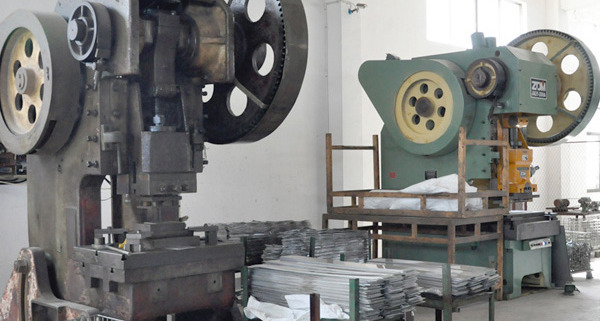Purpose of Stamping Work Calculation and Its Verification
Purpose of Stamping Work Calculation and Its Verification
Introduction

ChinaCustomStamping is a professional metal stamping and deep drawing manufacturer in China, specializing in precision metal forming processes such as blanking, piercing, and progressive die stamping. In the field of metal stamping, calculating stamping work (also known as blanking work) and verifying its compatibility with press machines are critical steps to ensure operational efficiency, equipment safety, and product quality. This article explores the significance of stamping work calculation, the methodology for verification, and practical considerations in industrial applications.
1. Significance of Stamping Work Calculation
1.1 Definition of Stamping Work
Stamping work (W) refers to the energy required to complete a punching or blanking operation. It is calculated as:
Where:
-
: Stamping work (Joules, J)
-
: Blanking force (N or kN)
-
: Material thickness (mm)
-
: Correction factor (dependent on material properties, see Table 1)
1.2 Importance in Press Machine Selection
-
Preventing Equipment Overload:
-
Insufficient stamping work calculation may lead to power overload, causing the press flywheel to decelerate abruptly. This can damage the motor or even result in catastrophic equipment failure.
-
Critical scenarios requiring rigorous verification:
-
Small-clearance blanking
-
Precision stamping
-
Thick-material stamping (>4mm)
-
High-speed progressive die operations.
-
-
-
Energy Efficiency:
-
Press machines rely on flywheel-stored energy and motor power. Excessive stamping work can deplete energy reserves, reducing productivity.
-
-
Tooling and Process Optimization:
-
Verification ensures the selected press machine’s rated work per stroke () exceeds the calculated . For example:
-
*J11-100 Press*: Maximum work per stroke = 3000 J (continuous) or 4000 J (single stroke).
-
-
2. Verification Methodology
2.1 Key Parameters
-
Material Properties: Correction factor varies with material hardness (Table 1).
Table 1: Correction Factor for Different Materials
| Material | Thickness (mm) | Value Range |
|---|---|---|
| Soft Steel (250–350 MPa) | <1 | 0.70–0.65 |
| 1–2 | 0.65–0.60 | |
| 2–4 | 0.60–0.50 | |
| >4 | 0.45–0.35 | |
| Hard Steel (500–700 MPa) | >4 | 0.30–0.15 |
-
Press Machine Specifications:
-
Flywheel mass (), diameter (), and speed () determine available energy.
-
2.2 Verification Formulas
-
Single-Stroke Work:
-
Continuous-Stroke Work:
Condition: .
3. Practical Applications at ChinaCustomStamping
3.1 Case Study: Thick-Steel Blanking
-
Material: 5mm hard steel (x=0.30).
-
Blanking Force (): 800 kN.
-
Calculated Work:
W=0.30×800×5/1000=1.2kJ
-
Press Selection: J11-100 (3000 J capacity) ensures safety.
3.2 Mitigating Risks
-
Flywheel Energy Monitoring: Regular checks prevent motor burnout.
-
Tool Maintenance: Worn dies increase , necessitating recalculations.
4. Conclusion
Accurate stamping work calculation and verification are indispensable for optimizing press machine performance, ensuring operational safety, and prolonging equipment lifespan. As a leading manufacturer, ChinaCustomStamping integrates these principles into its production workflows to deliver high-quality stamped components while minimizing downtime and risks



